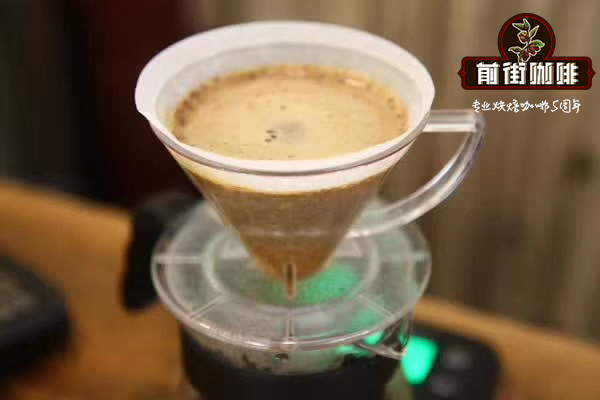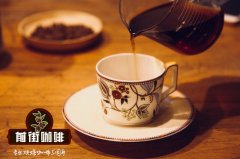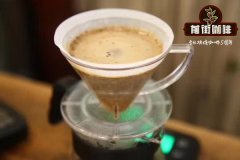What are the different methods of coffee treatment? what are the differences in the flavor of coffee?
Solarization is a traditional method of primary processing of coffee beans, and ancient coffee growing countries such as Ethiopia and Yemen still use solarization almost exclusively for raw beans.
Solarization begins by placing ripe or semi-ripe beans on a drying ground and drying them naturally. The exact time depends on local climatic conditions, and generally takes two weeks to four weeks.
When the moisture content of coffee beans is reduced to 12%, use a husker to grind off the dried pulp and silver skin.
Sunlight treatment is very demanding on the climate. If it rains during the sun, it will make the beans regain moisture and mold. Sun-dried beans are yellow when raw and brown in the center when baked, rather than white when washed.
Sun-baked beans have a relatively better sweetness and body, and less sourness, but the quality is less stable and will have greater fluctuations. Due to its low cost, solarization is widely used not only in Ethiopia and Yemen, but also for Robusta coffee grown in Africa and Indonesia.
semi-solarization
In order to improve the quality of coffee in Brazil, the Brazilian government invented the semi-sun method and vigorously promoted it. At present, almost all of Brazil's fine coffee beans are treated with semi-sun method. It can be said that the semi-sun method successfully improves the overall quality of Brazilian coffee.
The pre-treatment method of semi-solarization is almost identical to that of washing.
Bean selection: first coffee fruit into a large tank, remove the floating fruit, and then sink the fruit into the pulp sifting machine to remove pulp. To better remove the immature fruit, it is more important to let the coffee beans dry in the sun no longer with pulp, but only wrapped in a layer of pectin, which is more conducive to controlling the subsequent fermentation process.
Drying: Move the beans to the drying field and dry them in about 3 days.
Drying: further drying in a dryer until the beans have a moisture content of between 10.5% and 12%.
Polishing: Polishing and polishing are carried out before the beans are bagged and exported.
Due to climatic and technical requirements, only Brazil is widely used. Through semi-sun treatment, not only retain the unique sweet taste of the sun method, but also avoid the mildewed taste of the sun method, shaping the unique flavor of Brazilian coffee.
water washing treatment
Coffee washing began in the mid-18th century. The washing process involves removing the pulp of the coffee fruit (red cherry), then removing the mucous membrane remaining on the endocarp in a fermentation tank, and drying the beans after washing. The difference between the non-washing method and the washing method is that the non-washing method removes the pulp after drying, while the washing method removes the pulp and then dries.
The washing method removes impurities (stones or garbage, etc.) and defective beans through each step, so the appearance of the beans is uniform, generally considered to be of high quality, and the transaction price is higher than that of the naturally dried coffee beans.
However, the more detailed the division of labor, the more procedures for operation and hygiene management, and the higher the risk, so washing is not necessarily equal to high quality. The biggest disadvantage of washed coffee is that coffee beans are easily contaminated with the smell of fermentation during fermentation. Some coffee experts point out that "a fermented coffee bean will spoil 50 grams of beans." The beans will be stained with fermented flavor, most of which is due to the lack of management and maintenance of the fermentation tank. Soaking beans with mucous membranes on the endocarp in a fermentation tank overnight removes the mucous membranes. However, if the microorganisms in the fermentation tank change, it will cause the coffee beans to be stained with fermentation flavor.
In addition, the equipment cost of the coffee washing method is relatively high, and the steps of washing are also quite time-consuming, and the production cost is relatively increased.
Water washing method steps:
1. Bean selection: Put the harvested fruit in a water tank and soak for about 24 hours. The ripe fruit will sink, while the immature and overripe fruit will float up and can be culled.
2. Pulp removal: Using a machine, the peel and pulp are removed, leaving only the coffee beans wrapped in the endocarp. At this time, there is a layer of mucous membrane on the outside of the beans, and the washing process is to wash this layer of mucous membrane.
3. Hair alcohol: The adhesion of the mucosa is very strong, and it is not easy to remove. It must be placed in the tank for about 18-36 hours to make it alcohol and decompose the mucosa. There are two methods of fermentation, wet and dry, as the name suggests, the former with water, the latter without water. During the alcoholization process, the seeds and internal pulp undergo special changes, which is one of the most important steps in the washing process to affect coffee flavor. Some farms add hot water or alcohol to speed up the brewing process, which negatively affects the quality of the coffee beans and is not popular with specialty coffee lovers.
4. Water washing: farms that use water washing must build water washing tanks and be able to introduce an endless stream of fresh water. When processing, it is to put the beans into the pool, move back and forth, and use the friction of beans and the power of running water to wash the coffee beans to smooth and clean.
5. Drying: After washing, coffee beans are still wrapped in the endocarp, the moisture content reaches 50%, must be dried to reduce the moisture content to 12%, otherwise they will continue to mellow, moldy corruption. The better treatment is to use sunlight drying, although it takes 1 - 3 weeks, but the flavor is excellent and quite popular. In addition, some places use machine drying, which greatly shortens the processing time and makes the flavor inferior to sun-dried coffee.
6. Shelling: The dried beans can be stored in a warehouse or sent to a factory for shelling, removing the endocarp and silver film.
7. Selection and grading: Like the sun method, washed coffee has a selection and grading process to remove defective beans and ensure better quality before being sold to exporters around the world.
semiwash
Semi-washing is a relatively new and rare method. This method is also suitable only in certain areas of certain countries, where the climate has a relatively long dry period, and can be used to treat local coffee. The coffee produced by this process is sticky, and the slime is not removed as it is fermented in the tank. Therefore, the coffee produced by this semi-moist treatment method contains the characteristics of both wet treatment and dry treatment. The acidity, sweetness, flavor, and aroma of this coffee are all quite good; the only drawback is that the coffee does not taste as strong as the coffee produced by pure drying or washing.
Bean selection: first put coffee fruit into a large tank, sink red fruit and half-green half-red fruit into the pulp sifter, remove pulp, impurities.
Pectin removal: take out coffee beans, do not need to take the sun, do not need to pour into the sink fermentation, but directly into the pectin scraper next to the machine, only a small amount of water can be mechanically scraped off the sticky pectin crumbs.
Exposure: Then take out the raw beans with smooth surface and expose them outdoors until the moisture content drops to 12%.
wet planing
Wet-Hulling is the traditional method of processing Sumatra coffee in Indonesia, that is, when the raw beans are half dried and still have a moisture content of 30%-50%, the seed shell is removed first, and then they continue to be dried in order to solve the problem of too long drying time. As the drying time is shortened to two to four days, the fermentation period of the coffee beans is shortened, the acidity is also greatly reduced, the relative thickness is increased, and the caramel and fruity aromas are obvious, even with herbal or grassy aromas and woody aromas, which are characteristic of Sumatra.
However, the effect of removing the seed shell early is that the beans are half dried without the last two layers of protective cover (note: the four layers of coffee beans: peel, pectin, seed shell, silver skin), which is equivalent to taking off clothes and basking in the sun. Although wet planing solves the problem of drying time, the relative raw beans are contaminated by mold, fungi and yeast. But paradoxically, these factors have become key factors in creating the special aroma of mantenin.
Another feature of wet planing is the increased probability of so-called "sheep's foot beans." Because the raw beans are still very wet at the semi-soft stage, the shell is removed by the shell peeling machine, and the fragile soft wet raw beans are very easy to crack, break or scratch the surface of the beans by mechanical force, forming the so-called sheep's foot beans and scratch beans, resulting in poor phase change of the raw beans.
honey treatment
The so-called miel process (Spanish for Miel Process) is said to mean the process of making raw beans with mucous membranes that are sun-dried. After coffee beans have been stripped of their outer pulp, they have a sticky, gelatinous layer. The traditional washing method is to wash it with clean water, but because of the water resource limitation of some high-altitude producing areas, this direct drying method has appeared.
The honey treatment process is vulnerable to pollution and mold damage, requiring close supervision throughout the process, continuous stirring, and accelerated drying to avoid bad fermentation flavor. Its advantage is that it can best preserve the original sweet flavor of coffee ripe fruit, so that coffee presents a light brown sugar flavor and stone fruit sweet, while the berry flavor also supports the red wine base aroma, considered a very elegant product.
Honey-treated coffee beans are popular, largely because of its sweet and thick characteristics, which are very suitable for Espresso production in cafes. In recent years, coffee beans called "Miel Process" have become more and more popular, and have become the preferred material of international coffee contestants.
According to the proportion of pectin retained and drying methods are divided into:
White Honey 80%-90% pectin removed.
Yellow Honey retains 50% pectin, no fermentation.
Red Honey basically retains all pectin and has no fermentation.
Black Honey basically retains all pectin, drying at a slightly higher temperature at low altitude, covering slight fermentation in the first 24 hours, and transferring the drying process to African drying beds for drying.
Gold Honey basically retains all pectin, high altitude low temperature drying, prolonged drying time
Pressure honey treatment is now very rammed anaerobic treatment or said anaerobic fermentation!
That is pressure honey treatment, this is the same as brewing red wine, the coffee pulp removed with pectin coffee beans, together into stainless steel barrels fermentation, barrel pressure fermentation speed becomes very slow, so that coffee has more sweet and wonderful acid value! This is the ultimate goal!
Carbon dioxide maceration is a new treatment used in red wine treatment. It involves putting whole grapes in carbon dioxide gas to make them oxygen-free. In this way, even in the absence of yeast, the grape fruit itself will convert its own sugar into alcohol, thus bringing a special aroma. The wine brewed by this method has a soft aroma, rich taste and stable color.
How do you apply it to coffee?
1) Remove the pulp from the coffee beans and put them into stainless steel containers-why stainless steel containers? Stainless steel containers ensure a cleaner flavor, Sasa said. Then control different temperatures to affect the speed of the reaction.
2) Putting stainless steel containers in rooms where the temperature could be controlled more easily, they found that if more complex acids were needed, the temperature should be controlled to 4-8°C, and if higher sweetness was needed, the temperature should be controlled to 18-20°C.
3) Seal the fermentation tank so that more aromas can be developed.
4) This is the most critical and important step. Add carbon dioxide, which is denser than oxygen, to the fermentation tank, squeezing out air. This leaves the coffee beans oxygen-free, which slows down the breakdown of sugar in the pectin and reduces the pH at a slower rate.
With the help of CO2, the entire fermentation process will be extended by 3 days at 22°C, and if the temperature is lower, the fermentation time can be longer. Reduced dry taste and acetic acid taste.

Important Notice :
前街咖啡 FrontStreet Coffee has moved to new addredd:
FrontStreet Coffee Address: 315,Donghua East Road,GuangZhou
Tel:020 38364473
- Prev

The flavor characteristics of Yemeni mocha and Kenyan coffee, is it good?
Professional coffee knowledge exchange more coffee bean information Please follow the coffee workshop (Wechat official account cafe_style) friends who have just begun to taste boutique coffee will be puzzled by this, isn't it just a cup of coffee? there are so many difficult words that have no idea whether this cup of coffee tastes good or not. Africa has always been the best coffee producer in the world.
- Next

What are the different methods of coffee treatment? what are the differences in the flavor of coffee?
Tanning is a traditional method for the initial processing of coffee beans, and at present, almost all coffee-growing countries such as Ethiopia and Yemen still use solarization to treat raw beans. The sun treatment will first spread the ripe or half-ripe beans in the drying farm for natural drying. The specific time depends on the local climatic conditions, which usually takes two to four weeks. When the moisture of coffee beans
Related
- Beginners will see the "Coffee pull flower" guide!
- What is the difference between ice blog purified milk and ordinary milk coffee?
- Why is the Philippines the largest producer of crops in Liberia?
- For coffee extraction, should the fine powder be retained?
- How does extracted espresso fill pressed powder? How much strength does it take to press the powder?
- How to make jasmine cold extract coffee? Is the jasmine + latte good?
- Will this little toy really make the coffee taste better? How does Lily Drip affect coffee extraction?
- Will the action of slapping the filter cup also affect coffee extraction?
- What's the difference between powder-to-water ratio and powder-to-liquid ratio?
- What is the Ethiopian local species? What does it have to do with Heirloom native species?

